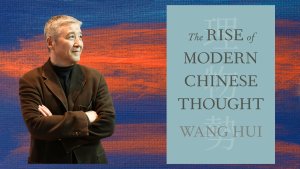The 2008 financial crisis was a shock to faith in entirely free financial markets. But the neoliberal assumptions underlying the previously dominant “Washington Consensus” continue to inform much Western commentary on China’s economy.
Originally published on Project Syndicate
In 2013, Chinese President Xi Xinping heartened many Western economists by committing to a “decisive role” for the market within China’s economy. Four years on, expectations of significant market-oriented reform have been dashed, and state influence over the economy has significantly increased. Yet the Chinese economy continues to grow rapidly and will likely continue to do so. If it does, longstanding assumptions about the optimal balance of state and market mechanisms in driving economic development will be severely challenged.
The 2008 financial crisis was a shock to faith in entirely free financial markets. But the neoliberal assumptions underlying the previously dominant “Washington Consensus” continue to inform much Western commentary on China’s economy. Deeper financial market liberalization, it is argued, would better discipline the real economy and lead to more efficient capital allocation. Capital account liberalization would prevent wasteful investment in low-return domestic projects. And reducing the role of dominant state-owned enterprises (SOEs) would unleash innovation and economic dynamism.
But, as Joe Studwell of the China Economic Quarterly argues persuasively in his book How Asia Works, the original East Asian success stories – Japan and South Korea – got rich by ignoring most of this policy prescription. Finance was kept on a tight leash; credit was directed or guided to support specific government-defined industrial objectives; and domestic industry was nurtured behind tariff protection, while being forced to compete aggressively for overseas markets.
China is attempting to follow Japan and South Korea’s path of rapid economic catch-up. But in some ways it faces a more difficult challenge, because its sheer size makes it essential to move away from a predominantly export-driven growth model at an earlier stage of development. To meet that challenge, it seeks to use a pragmatic mix of market incentives and state direction.
Private-sector entrepreneurship plays a vital role. Huge companies such as Tencent and Alibaba are second to none in innovative flair. Chinese bicycle-sharing apps are now being copied in advanced economies. And private companies play world-leading roles in renewable energy and electric vehicles. In part, China is a vibrant capitalist economy.
But huge state-driven infrastructure investment – in excellent subway systems and high-speed rail, for example – creates a powerful platform for modern economic growth within rapidly expanding and well-connected cities. And through the “Made in China 2025” program, China’s leaders are seeking to use state-defined objectives to drive Chinese industry toward higher technology and value-added.
High-priority sectors such as robotics, aerospace, electric vehicles, and advanced medical equipment have been identified; targets for increased spending on research and development have been established; and leading state-owned companies will play a major role, alongside private companies. This is a far cry from the policy prescriptions of the Washington Consensus, but not from the policy mix deployed by South Korea during its period of explosive economic growth in the 1960s and 1970s.
After 2009, meanwhile, higher investment, funded by state banks, played a vital macroeconomic role, maintaining growth in the face of the global economic slowdown. And maintaining an only partly liberalized financial sector, which channels savings to investment at below-market rates, has made it easier to maintain the high investment essential to sustained rapid growth.
The advantages of this policy mix certainly come with significant risks. If the role of the SOEs is extended too far, the private sector will be squeezed out, and the Made in China initiative could easily result in misdirected investments.
Already, credit-fueled real-estate investment has undoubtedly resulted in massive overbuilding in some second- and third-tier cities, with properties held as speculative vehicles rather than to meet real housing needs. The very fact that the banking sector is tightly controlled has fostered dramatic growth in shadow banking activities, creating complex financial instruments and structures eerily reminiscent of those that helped create the 2008 crisis. And the huge increase in leverage – non-financial debt has grown from less than 150% of GDP in 2008 to more than 250% today – might well lead, as People’s Bank Governor Zhou Xiaochuan has just warned, to a “Minsky moment” of evaporating confidence and severe financial stress.Given these risks, any long-term growth prediction is uncertain, and a significant short-term slowdown may well occur. Indeed, with the 19th National Congress drawing to a close, the Chinese authorities may deliberately engineer a slowdown as part of a strategy to limit further leverage growth. Such a slowdown would have a major depressive impact on the global economy.
But the tools available to China to manage such a slowdown within a “hybrid socialist market economy,” and thus to maintain strong medium-term growth, should not be underestimated. The very fact that most corporate debt is owed by state-owned enterprises to state-owned banks, with only limited links between the Chinese and overseas banking systems, will make it easier to implement a restructuring program for bad debt without provoking a self-reinforcing crisis. Likewise, as China’s demographic profile causes the labor market to tighten sharply, rapidly rising real wages will make it easier to achieve strong growth in domestic demand without excessive credit creation.
So, whatever its short-term prospects, there is a good chance that China’s economy will continue to grow toward middle- and then high-income levels, driven by a mixed market- and state-driven development model. If China had more comprehensively embraced the policy prescriptions implied by the Washington Consensus over the last ten or 20 years, its economic growth would have been considerably slower. The economic theories that underpinned those prescriptions must reckon with that fact – and with China’s likely continued success.





